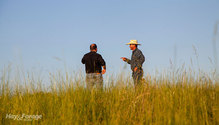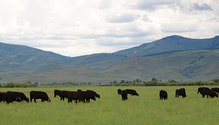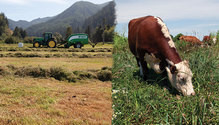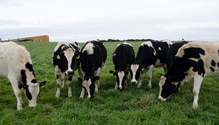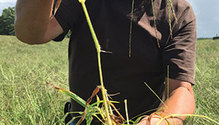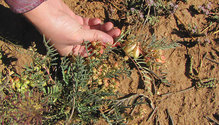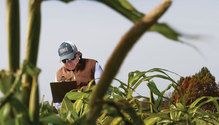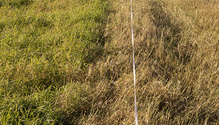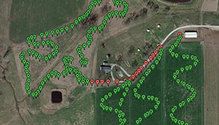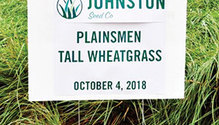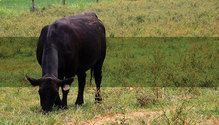Close
Hugh Aljoe has visited a lot of ranches and consulted with a lot of livestock producers in his role as the director of producer relations and as a pasture and range consultant with the Noble Research
Pick a cow . . . any cow. How tolerant is she to fescue toxicosis? The truth is: We don’t always know. But how great would it be if we did? I’m convinced that someday we will select bulls and
In the past, agriculture was a vocation learned mainly through family ties. However, little headway has been made to create practical, hands-on learning opportunities for individuals from non-ag backgrounds
In a recent Texas Range Webinar, Morgan Treadwell, Texas A&M AgriLife Extension range specialist, revealed a new approach to range management t
When it comes to providing forage for livestock in the winter, there are generally two methods: You can provide forage in the form of traditional hay, or you can feed it by grazing standing forage
Healthy pastures are the key to efficiently feeding beef cattle in the humid regions of the United States
We’ve all used rules of thumb in our daily decision-making processes. Such rules or axioms are generally helpful and, more often than not, result in favorable outcomes.Farming and ranching don’t
In 1986, Carl Hoveland, former University of Georgia extension forage specialist, wrote, “The greatest opportunity for improving profitability in Southeastern beef production lies in stockering wean
Management-Intensive grazing (MiG) has become a commonplace practice among many livestock producers
There seems to be growing interest in grazing dairy heifers, especially in areas looking to utilize perennial forages to protect water resources
Summer is a period in the Upper Midwest that is critical for operations that rely on common temperate grasses like orchardgrass, perennial ryegrass, Kentucky bluegrass, or smooth bromegrass
Found across western North America, locoweed (also called milkvetch) is an ever-present concern for livestock grazers, particularly in the early spring and late fall
No-till planting methods have been in existence for decades and while this method of establishing crops has grown in acceptance, there is still a lot of tillage being used
When it comes to prepping for winter survival and spring regrowth of forages, fall is the most important among the four seasons
The concept is pretty simple: Keep pastures growing and keep animals eating.A lot goes into that first part of the equation — adequate soil fertility for sure.But there’s also the challenge
John F. Kennedy, in his 1962 State of the Union Address, said, “The time to repair the roof is when the sun is shining.” This little bit of wisdom is good advice for living our lives, but
Through a Conservation Innovation Grant from USDA Natural Resources Conservation Services, the University of Missouri is developing tools to improve the yield and nutritive value of pasture forages
The Southern Great Plains can provide an abundance of forage for putting weight on stocker cattle
Making hay is an expensive and time-consuming process, said grazing consultant Jim Gerrish. The price of equipment, fuel, labor, and fertilizer continues to rise, while the value of animal products remain
Weed and brush encroachment into pastures and hayfields can lower the ability to meet nutritional needs of most livestock operations
..
Visit our partner publications:
Hoard's Dairyman | Journal of Nutrient Management
